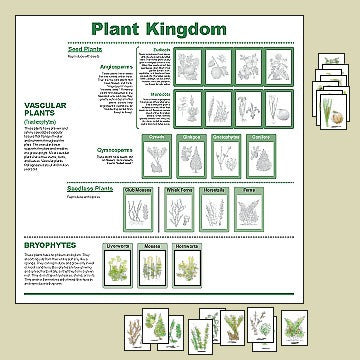News
Fact-checking - A must for your classroom September 02 2018, 0 Comments
In the Northern Hemisphere, many schools are beginning their new year. Others around the world are in the last term for their school year. Wherever you are in your yearly cycle, please make time for fact-checking the science materials your children use in their classroom.
By fact-checking, I mean that you read the text and look at the illustrations for the learning materials that children will see. Then you confirm the information with reliable references. This sounds fairly straight-forward, but it is time-consuming, and therefore few people do it.
Fact-checking is absolutely critical because anyone can print materials, whether or not they are familiar with the subject matter. The visual impression and first information that children get from a chart will stick with them, whether it is accurate or not.
Some authors of Montessori materials are conscientious and carefully research their works. The illustrations on this page are the animal and plant kingdom charts from InPrint for Children, a company which always produces quality materials that are beautiful and accurate. Its owner and designer, Carolyn Jones-Spearman, is a perfectionist, and it shows in her work. That is why I partner with InPrint and sell those materials.


Unfortunately, some authors produce materials with errors or misconceptions because they don’t take time to learn the subject matter or because that is the way they’ve always done it. Some purchase a company and continue to provide its same materials without evaluating them. Certainly, there are commercially available materials that are not suitable as learning materials for children, either because they are outdated, or present false or misleading information.
It appears that all adults who create materials for elementary Montessori children do not have a good grasp of science subject matter. Running a business, printing materials, and marketing them are important skills for a business, and some do that well, even though they are not good at writing or researching valid content. Just because the ads look good, don’t assume that the materials are great.
I suggest that you go over all the materials you will provide to the children, whether those materials are newly printed or older ones that you have in the closet. If the volume is too great for you to cover, perhaps you can get help from older elementary children or secondary students. Children should see fact-checking as a useful activity for anyone.
First, look at the material and its illustrations. Do the illustrations give a clear picture of the subject? Are they indeed examples of the subject? I have seen charts illustrated with organisms that are not the ones being described. I have also seen superficially attractive charts that had artistic but wrong or confusing illustrations. A scientific illustration should clearly depict the features that children need to learn.
Next, read the text. Are there spelling or grammar mistakes? Does the language read smoothly, and is it concise? Most importantly, does the text convey the information clearly? The descriptions on a science chart shouldn’t be a dull list of facts, but they should not be wordy or have convoluted language either. Authors for children need to be held to the same standard of writing as a professional writing for adults. It should be our goal to provide children with examples of good writing in all their materials.
What do you do if you find less than acceptable content in a material? I strongly suggest that you write the publisher or seller of the material and give them a description of the problem. If the content needs to change, as most of biological classification has done in the last 20 years, authors need to know this. Don’t be shy in asking for a corrected version. See how the seller responds. You may wish to return the material and ask for a refund. It shouldn’t matter if you have had the material for a while. If it has serious defects, then you should be able to return it, and you may wish to warn your fellow teachers. Until teachers put pressure on the publishers of Montessori materials to get rid of their mistakes, commercially available products are not likely to improve.
That being said, if you find a simple typo, try putting a white sticker over it and correcting it yourself. The publisher would probably be grateful to have your corrections, but this is not the sort of thing that should cause you to return a material.
I certainly welcome reports of any spelling or grammar mistakes in my works. I seldom get them, however. When I went back through my Plant Lessons book before I printed it last spring, I found a number of grammar mistakes, often having to do with the placement of commas. I’m still learning and striving to improve my writing skills.
If you have specific questions about the contents of a science material, and you have not been able to find the answers on your own, you may email your questions to me. I will try to answer them, although I can’t guarantee how quickly. I'll address finding reliable sources of information in a future blog.
Priscilla
